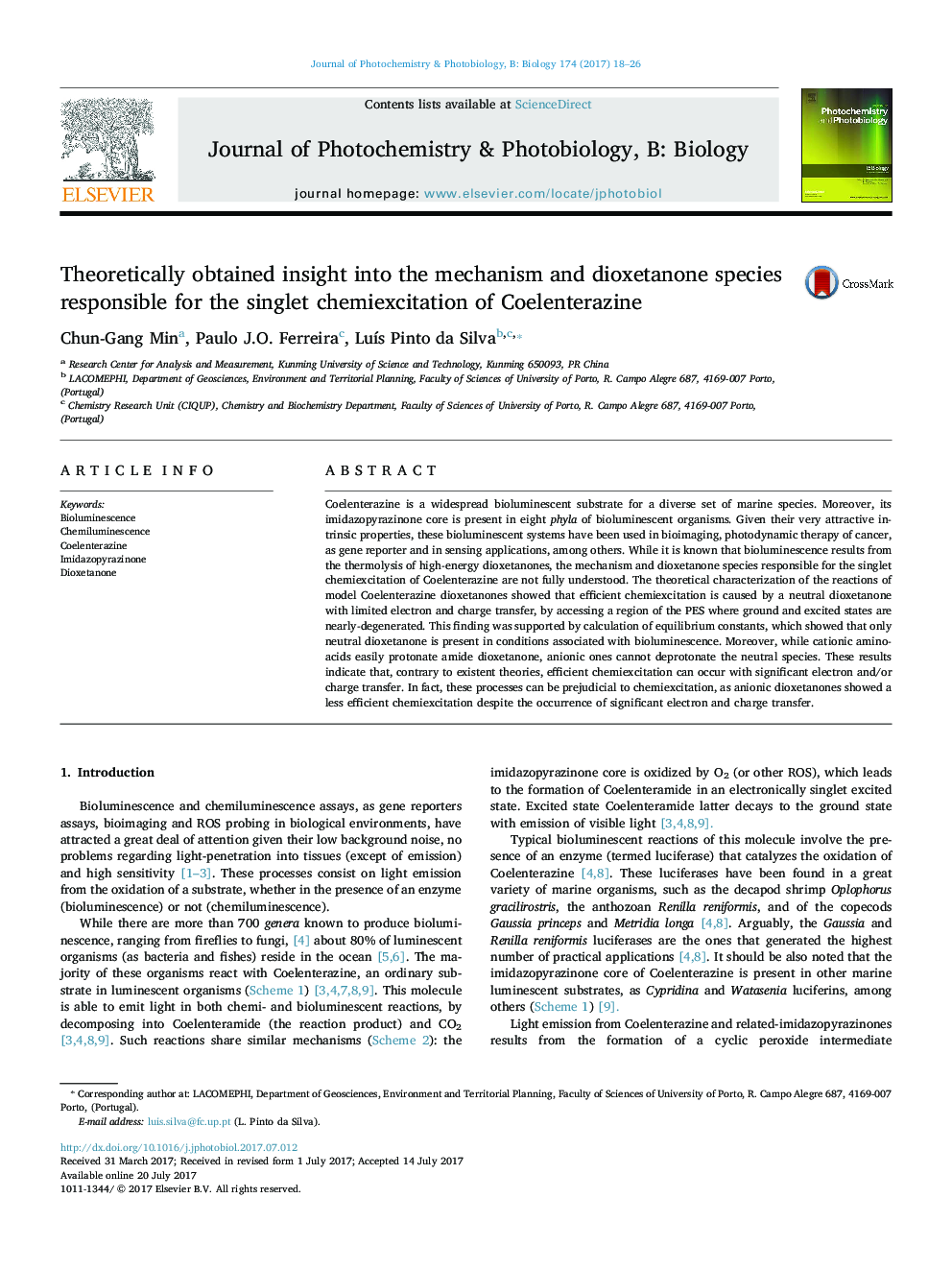| Article ID | Journal | Published Year | Pages | File Type |
|---|---|---|---|---|
| 4754318 | Journal of Photochemistry and Photobiology B: Biology | 2017 | 9 Pages |
â¢Efficient chemiexcitation of Coelenterazine results from a neutral dioxetanone.â¢Efficient chemiexcitation is achieved without significant electron/charge transfer.â¢The thermolysis of anionic dioxetanones leads to less efficient chemiexcitation.â¢This lower efficiency occurs albeit significant electron and charge transfers.
Coelenterazine is a widespread bioluminescent substrate for a diverse set of marine species. Moreover, its imidazopyrazinone core is present in eight phyla of bioluminescent organisms. Given their very attractive intrinsic properties, these bioluminescent systems have been used in bioimaging, photodynamic therapy of cancer, as gene reporter and in sensing applications, among others. While it is known that bioluminescence results from the thermolysis of high-energy dioxetanones, the mechanism and dioxetanone species responsible for the singlet chemiexcitation of Coelenterazine are not fully understood. The theoretical characterization of the reactions of model Coelenterazine dioxetanones showed that efficient chemiexcitation is caused by a neutral dioxetanone with limited electron and charge transfer, by accessing a region of the PES where ground and excited states are nearly-degenerated. This finding was supported by calculation of equilibrium constants, which showed that only neutral dioxetanone is present in conditions associated with bioluminescence. Moreover, while cationic amino-acids easily protonate amide dioxetanone, anionic ones cannot deprotonate the neutral species. These results indicate that, contrary to existent theories, efficient chemiexcitation can occur with significant electron and/or charge transfer. In fact, these processes can be prejudicial to chemiexcitation, as anionic dioxetanones showed a less efficient chemiexcitation despite the occurrence of significant electron and charge transfer.
Graphical AbstractDownload high-res image (62KB)Download full-size image
